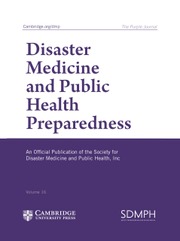Measles Outbreak in Texas – Urgent Need for Attention
Dear Editor,
Measles (rubeola) is caused by measles virus, a highly contagious, single stranded, enveloped virus, a part of the Paramyxoviridae family. It can be transmitted via respiratory droplets or can spread via sneezing or coughing of an infected person. Symptoms include runny rose, bloodshot eyes, and a maculopapular rash that spreads from the face to the trunk and then to rest of the body. Reference Peter 1 It has numerous complications, such as pneumonia, blindness, and encephalitis, which can lead to frightening long-term effects.Reference Peter 1
This disease, which was once declared eradicated from US in the year 2000, has resurfaced and affected a total of 607 patients since January 2025 across the US, with Texas having most of the cases. 2 As of April 4, 2025, a total of 481 cases have been reported in Texas; 56 patients have been hospitalized and 1 confirmed death in an unvaccinated child has been notified. 3 This is an alarming situation warranting an urgent need to swiftly control the transmission of this deadly outbreak.
The best way of protection against this contagious airborne disease is by measles-mumps-rubella (MMR) vaccination. 3 According to the CDC recommendation in US, children should receive the first dose of measles vaccine between 12-15 months of age, and the second dose between 4-6 years age.Reference Sinclair, Grefenstette and Krauland 4 Most of the cases are witnessed in the pediatric population, especially the ones who are unvaccinated or have an uncertain vaccination history. 2
In Texas, vaccine exemption rules permit students to remain unvaccinated if they are willing to do so, due to religious or personal preferences.Reference Sinclair, Grefenstette and Krauland 4 Since 2003, the number of students willingly wanting to remain unvaccinated has risen from 2300 to 64 000.Reference Sinclair, Grefenstette and Krauland 4 Unfortunately, vaccine hesitancy is an important barrier in achieving measles eradication, and it is more imperative than ever to address this issue in a timely manner.
To counter vaccine hesitancy, it is pertinent to use evidence-based and culturally appropriate techniques when interacting with communities (Figure 1). Additionally, motivational interviewing, a counselling strategy which guides people to find motivation to make positive behavior change, can be adopted. Among people with reduced health literacy levels, icon arrays and decision aids can be employed to help them understand better. Furthermore, active community involvement and use of vaccine champions who can engage in positive dialogue among the masses, can help alleviate vaccine hesitancy. Importantly, myths on social media should be debunked and any misinformation seen online should be discredited.Reference Tuckerman, Kaufman and Danchin 5 Moreover, educational institutes and day care centers with unvaccinated students or staff should take protective measures by keeping track of vaccination records of all workers, encouraging students to get the required 2 doses of vaccine if they are still unvaccinated, and by highlighting the importance of hand hygiene and coughing etiquettes. Other measures include isolating suspected cases and frequent cleaning of contaminated surfaces.

Figure 1. Roadmap for post–measles outbreak response: a 6-theme approach to address the public health emergency.
In view of the above, urgent virus containment measures must be taken by public health authorities to curb the spread and protect the community.
Funding statement
The author(s) received no financial support for the research, authorship, and/or publication of this article.
Competing interests
The author(s) declared no potential conflicts of interest with respect to the research, authorship, and/or publication of this article.



